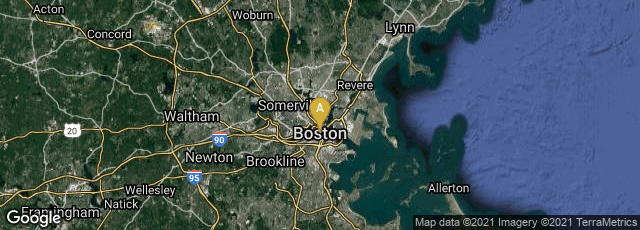The images on this page represent a cross-section of the Rand & Avery building with the steam engine apparently in the basement, and the presses on higher floors. The elevator servicing all the floors would have been an unusual feature for the time, as would have been the placement of the very heavy printing machines on upper floors. How the belt system connecting the steam engine to the printing machines would have operated efficiently over such a long distance is unclear.
The job composition room for the composition of "job printing" or decorative printing, as distinct for long narrative composition projects like books or longer pamphlets.
This is the main composition room for typesetting longer documents. It was set high up in the building and very well lit with natural light from large windows on both sides of the very long room.
In the Press Room we see women in hoop skirts working along side men. Whether women did more than feed paper into the Adams presses is unclear. Rand & Avery operated "twenty-one Adams Power Presses, three sizes of Ruggles Presses, and one Hoe Cylinder Press, besides Hand Presses, giving employment to some one hundred operatives, of both sexes, and "throwing off" annually over eight hundred million royal octavo pages." (These details are quoted from the "Drying Room" page in the Specimens volume.)


A: Boston, Massachusetts, United States
In this exceptionally elegant historiated title page for a printer's specimen volume the artist has depicted the Rand & Avery building above which we see the typesetter, an Adams Power Press operated by a woman, an iron hand press, and other elements of the printing trade. Featuring a woman operating a printing machine would have been an unusual feature of a printers' specimen at the time. The depiction of the Adams Power Press appears to be a standard image, probably produced by the press manufacturer for advertising. Note the very similar rendition of the press, also operated by a woman in Jacob Abbot's book on The Harper Establishment (1855).
In their undated elegant book entitled Specimens, a showcase of their type founts and printing styles, printers George C. Rand and Abraham Avery of Boston introduced their volume with a beautifully illustrated series of chapters on their Boston facility, undoubtedly one of the most advanced in the United States in the period around the Civil War. Though the book was undated we know that it was published before 1867 when the name of the firm was changed to Rand, Avery & Frye. Regrettably their outstanding and large printing establishment was decimated by The Great Boston Fire on November 8, 1872.
Besides the elegant engraved two-color title page for this volume, containing depictions in miniature of many of the significant features of their facility, Rand and Avery devoted a page in their volume to the Corliss steam engine powering their plant, a machine about which they were undoubtedly proud, as it was absolutely "state of the art." Of all the printing specimens published in America, or in England for that matter, around this time, Rand and Avery were inclined to place the most emphasis on their equipment. Captioning the image of their steam engine they wrote, "We had, at the outset, designed to described more fully the various machines in use in our Establishment; but we now find how entirely inadequate a book of this size is to any satisfactory description of the many Printing and Hydraulic Presses, Paper Folders, Cutting Machines, & c., which we employ in our business. However, our curious friends, —and, indeed, all who wish to know how books are made,—will find our office open to their inspection at all seasonable hours, and skilled workmen to explain what is mysterious in the art of Printing."